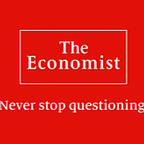On the Perils of 99p Pricing
This Saturday’s Wall Street Journal has an excellent article by Josh Zumbrun on the pitfalls for the unwary shopper of a price ending in 99p. We are all familiar with prices that end in 99 — goods aren’t £5, they are £4.99; TVs aren’t £300, they are £299. Why? One good explanation is that it is to do with the use of cash registers. When cash registers were introduced shop owners set prices to end at 99 to force the server in the shop to open the till. If a price was, say, £5, then a customer might hand over a £5 note which the salesperson would just pocket and not put in the till. By making a price require 1 penny change the salesperson was forced to open the till and so register the money received. However, research suggests that prices were set at 99 before the cash register was introduced so this theory may have a bit of an ‘urban myth’ about it.
Obviously, most of us shoppers assume that the 99p trick is used by firms to tempt us into a purchase. When we see a price of £3.99, although we all know that is basically the same as £4, we can’t help but read the price from left to right and that image of the 3 somehow can never be got rid of. £3.99 just seems less than £4 even though it isn’t. And to be honest it doesn’t matter — I’ve only been caught out for 1p so who cares?
Well it DOES matter and you ought to care! And the reason is one that few of us will have grasped. To understand the real reason for 99p or £99 pricing we must approach it, not from the consumer’s point of view, but the seller’s. What is the goal of the seller? To charge us as much for a good as they can get away with. And that is what the 99p is all about. Think of a shop with a good costing, say, £3 to sell. How much will they charge? The shopkeeper seeks to push the price up as far as they can. And given that the jump-off point for many consumers is a change in the round-number (in this case £4), the shop pushes the price up as high as they can until it’s just-short of £4. And this means £3.99. Put simply, £1.99, or £4.99, or £99, or £299, or £9,999, is, in each case, about as high a price as the retailer can get away with. So a car-seller raises the price of the car up to £9,999, knowing, if they pushed up £1 more, demand would suddenly become more elastic and they would lose more in sales than they would in a higher price per sale. What this means is: a price ending in 99 is very unlikely to be any kind of bargain; quite the reverse, a product whose price ends in a 99 is probably a relatively highly-priced good.
And there is evidence for this. Two economists, Daniel Levy and Avichai Snir, found that, when comparing the same products when sold across American grocery stores, when that product was priced at X.99 rather than, say, X.20 or X.50, of X.75, the good priced at X.99p was, on average, 18% higher than the same good when not priced to end at 99p. So when we pay a price ending 99p for a good we are probably paying about 20% more than we would be paying if the price did not end in 99. And for some goods the price difference is far larger. In the case of soft drinks it is a full 43% and for toilet paper it is 35%. The below table summarises the results.
Thus, when we are drawn to a good whose price ends in some form of 99 we are not complicit in a trivial bit of price gamesmanship, we are in fact very likely to be paying top wack for the item in question. So when you are out doing your Christmas shopping this year a bit of advice: stay clear of any item whose price ends in a 99 — you are almost certainly being overcharged. Unless you’re buying frozen juice or cookies.
By Ian StJohn
https://www.amazon.co.uk/Makers-Modern-Economic-Thought-Economists-ebook/dp/B01MU7EEMS
